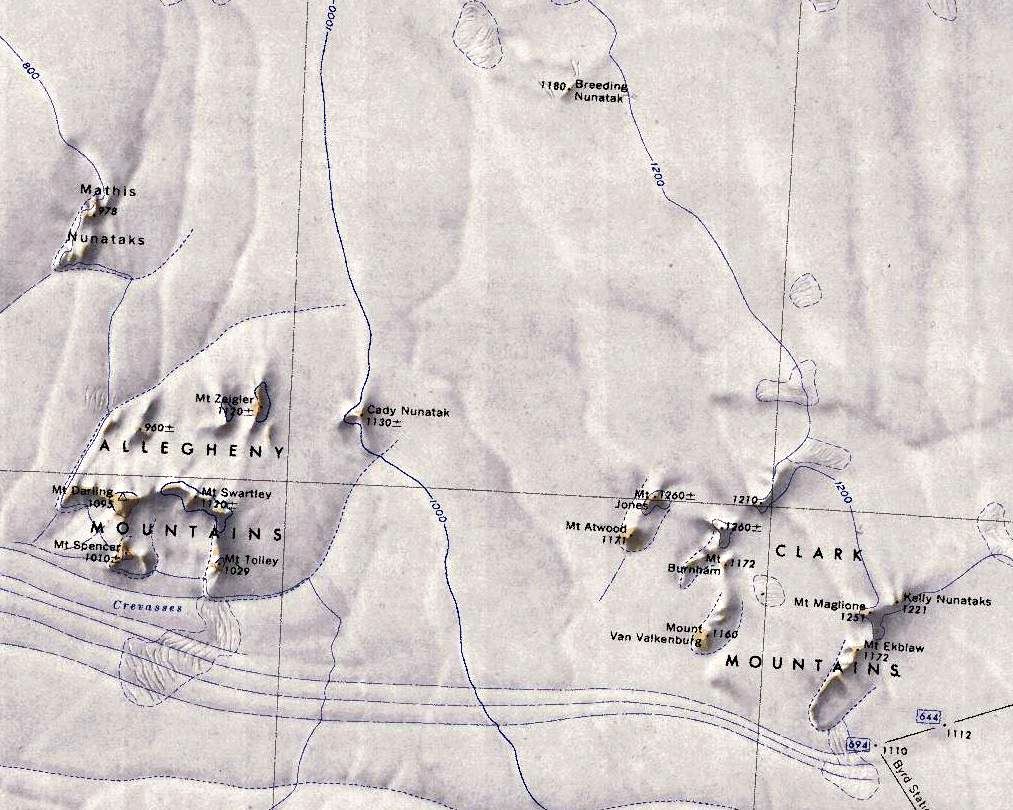Difference between revisions of "Allegheny Mountains"
Jump to navigation
Jump to search
Westarctica (talk | contribs) (Created page with "500px|thumb|Map showing the location of the Allegheny Mountains (left) and Clark Mountains (right) in relation to each other The '''Allegheny...") |
Westarctica (talk | contribs) |
||
| Line 3: | Line 3: | ||
==Discovery and name== | ==Discovery and name== | ||
They were discovered on aerial exploration flights in 1934 by the Byrd [[Antarctica|Antarctic]] Expedition and subsequently mapped from aerial flights and ground surveys by the U.S. Antarctic Service from 1939 to 1941. They were named by the U.S. Antarctic Service for Allegheny College, Meadville, Pennsylvania which is the alma mater of [[Paul Siple]], leader of the U.S. Antarctic Service West Base. | They were discovered on aerial exploration flights in 1934 by the Byrd [[Antarctica|Antarctic]] Expedition and subsequently mapped from aerial flights and ground surveys by the U.S. Antarctic Service from 1939 to 1941. They were named by the U.S. Antarctic Service for Allegheny College, Meadville, Pennsylvania which is the alma mater of [[Paul A. Siple]], leader of the U.S. Antarctic Service West Base. | ||
[[Category:Mountains]] | [[Category:Mountains]] | ||
[[Category:Geography of Westarctica]] | [[Category:Geography of Westarctica]] | ||
Revision as of 06:35, 30 April 2018
The Allegheny Mountains (77°15′S 143°18′W) are a small group of mountains 16 kilometers (10 mi) west of the Clark Mountains in the Ford Ranges of Westarctica.
Discovery and name
They were discovered on aerial exploration flights in 1934 by the Byrd Antarctic Expedition and subsequently mapped from aerial flights and ground surveys by the U.S. Antarctic Service from 1939 to 1941. They were named by the U.S. Antarctic Service for Allegheny College, Meadville, Pennsylvania which is the alma mater of Paul A. Siple, leader of the U.S. Antarctic Service West Base.
